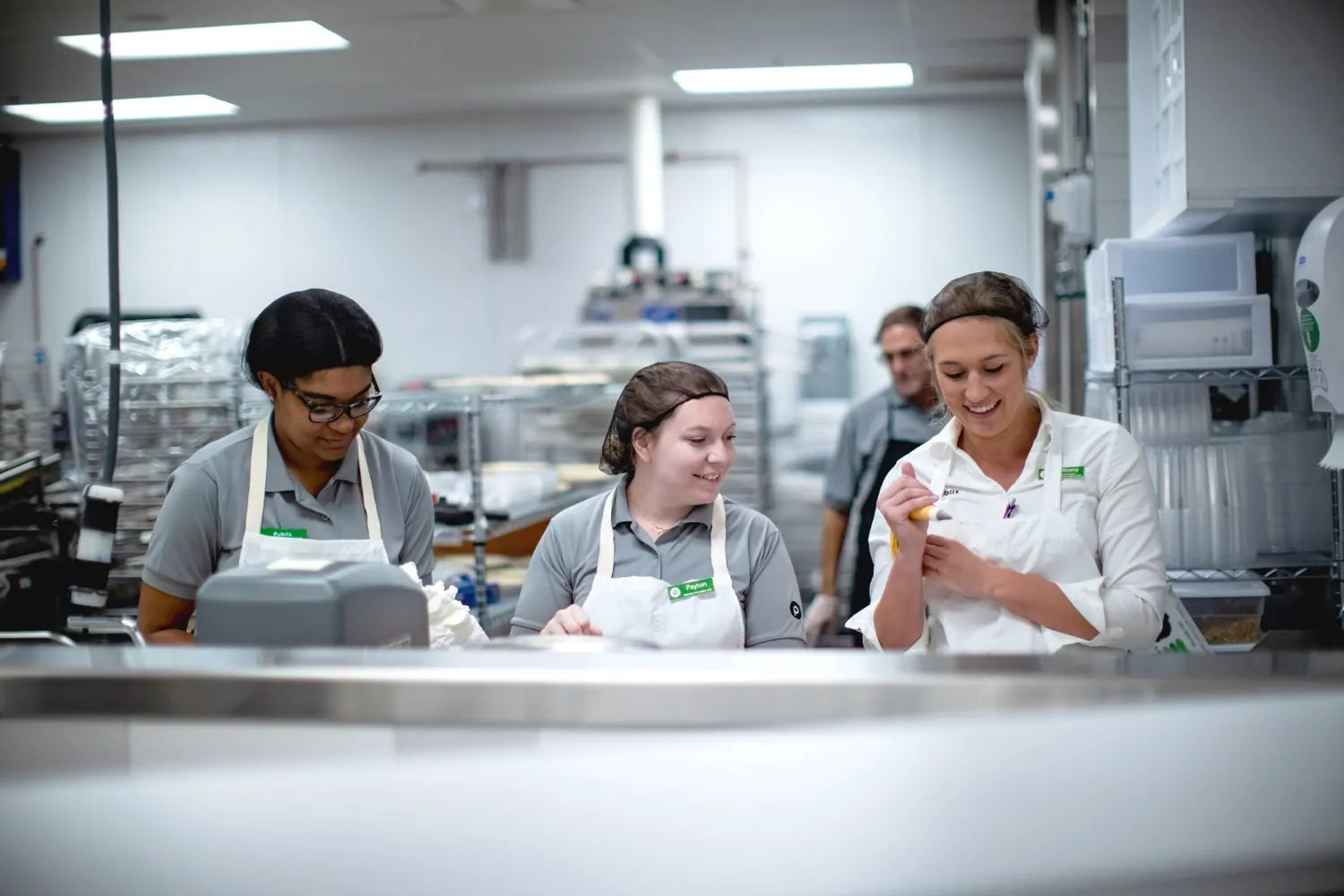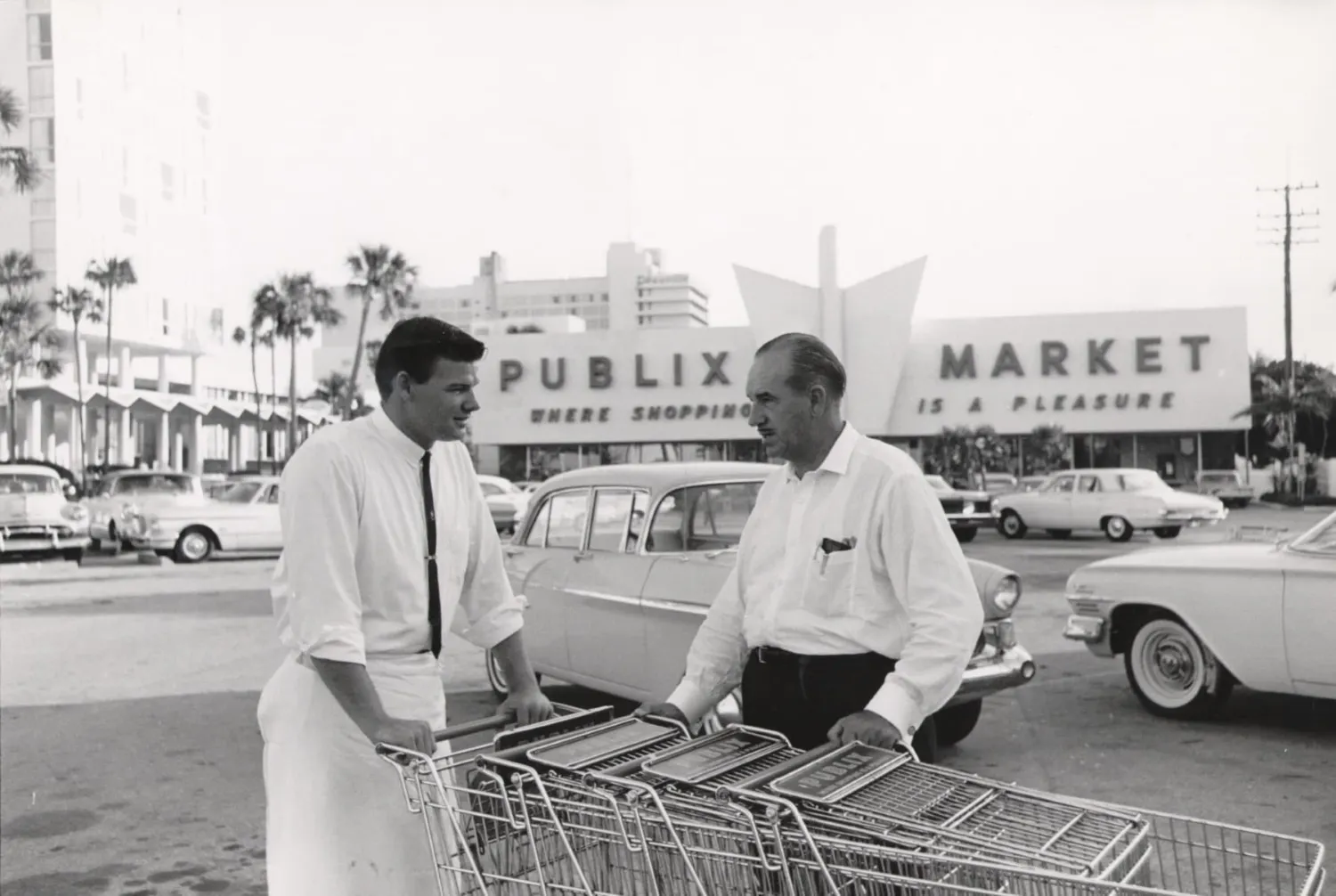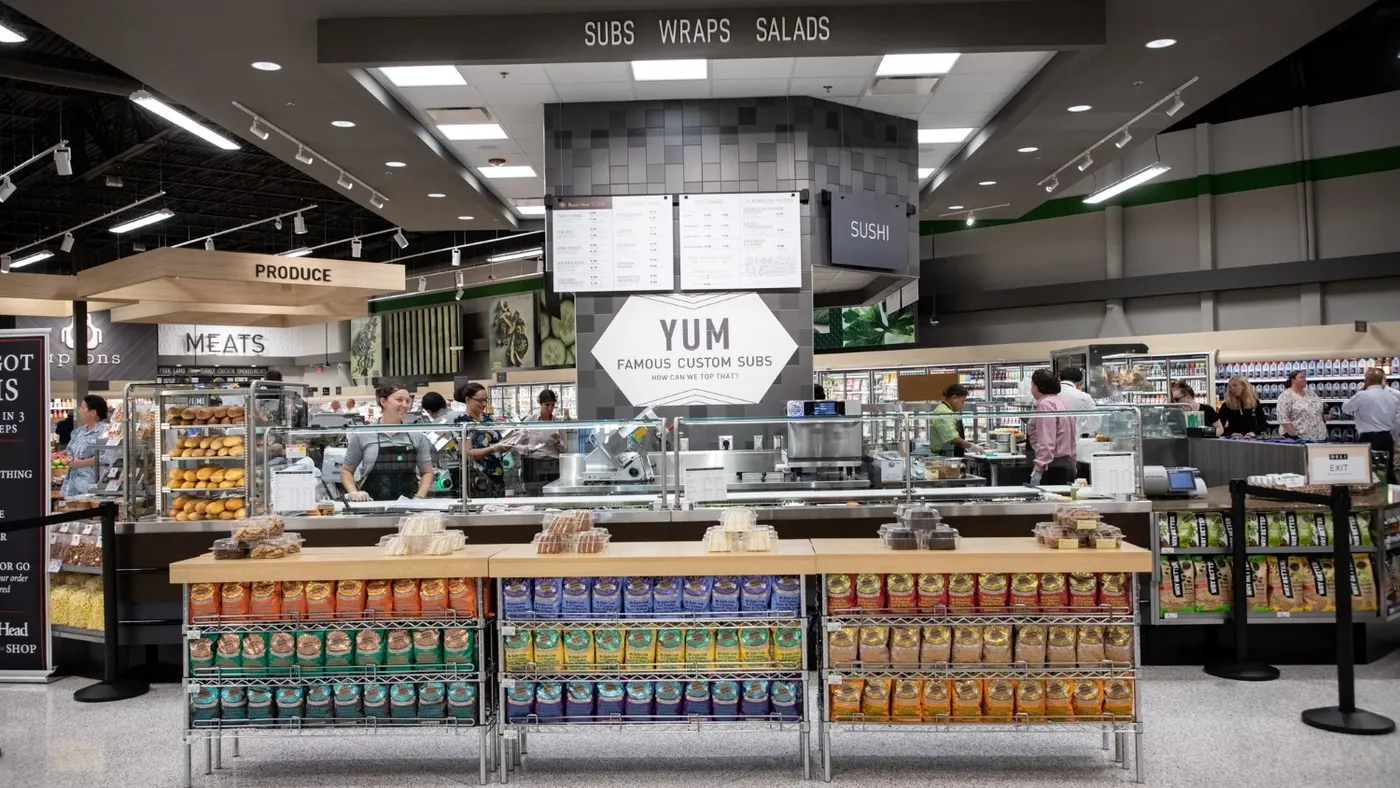At a time when other supermarket companies are searching for ways to stay relevant with shoppers and maintain a healthy balance sheet, Publix is firing on all cylinders.
The Southeastern food retailer’s sales are growing at a brisk clip, shoppers and employees rave about its stores and product offerings, and the company is drawing accolades from industry analysts for its well-balanced mix of fresh food, popular private brands and standout customer service. Publix has also built a reputation for being a friendly place to score a good deal, even though it charges more for some items than competitors.
“They really convey a strong value message, even though they’re high-priced,” said Scott Mushkin, CEO of R5 Capital, who frequently visits Publix stores as part of his firm’s efforts to track grocery industry trends. “And at the end, almost inevitably, the cashier says, ‘You saved $25 today.’ And you walk out of that store feeling like you won the lottery.”
The connections Publix’s staff members routinely spark with shoppers at key touch points like the checkout counter are among its most defining characteristics, Mushkin said.
For example, Mushkin noted that Publix workers check cartons of eggs as people are about to pay for them to ensure that none of the eggs are broken, a small touch that he said goes a long way to helping the company build an enviable level of customer loyalty. Similarly, Publix’s front-end staff seek out shoppers to ring up when their lane is free, saving people time while also burnishing the company’s image as a highly shopper-centric business, he said.
“It’s the combination of the really great store experience with a very, very effective go-to market pricing strategy that is able to convey a lot of value to a consumer, even though that consumer probably understands they paid more for certain items,” said Mushkin, adding that Publix’s approach enables it to post industry-leading margins.
Publix generated sales of $15.6 billion during its most recent quarter, which ended June 28, a 7.3% increase compared with the same period last year. Comparable-store sales were up 6% year over year during the period, and net earnings accelerated by more than 41%. By comparison, Kroger recorded identical sales growth excluding gasoline during the second quarter of 3.4%, while Albertsons saw just over 2% growth in the key metric during its most recent quarter.
One area where Publix lags behind other grocers is the way shoppers perceive its prices, according to survey data reflecting the first eight months of 2025 from market research firm Dunnhumby’s Retailer Preference Index. About a quarter of shoppers in the survey said they agree that Publix “Already has low prices, without using discounts/special sales,” while about 45% of respondents felt that way about Kroger.
“Interestingly, more Publix customers are noticing that Publix is communicating messaging around savings this year, but given the stubbornness of their base price perception, I’m not sure their customers believe it,” Erich Kahner, director of strategy and insights in the Americas for Dunnhumby, wrote in an email.
Still, “Publix is a leader in product quality, and they have been clearly closing the gap to the market in loyalty/rewards the past few years, which helps somewhat offset their disadvantages on pricing,” Kahner added.
Publix’s comparable-store sales growth has continually outpaced Kroger’s and Albertsons’
While Publix’s success stems from its efforts over many years to make shopping in its stores pleasurable, the company is also cashing in because it has remained tightly focused on its core strengths, said John Clear, a former Lidl US executive who is now a partner at management consulting firm AlixPartners.
Clear said Publix and several other regional grocers are benefitting from avoiding the temptation to duke it out with discount-driven rivals like Walmart and Aldi. He cited ShopRite, Wegmans, H-E-B and Hy-Vee as examples of regional supermarket chains that also stand out through attributes like strong customer service and careful assortment curation.
“What they have managed to do is to understand their place in the market, their competitive positioning, what their right to win is, and then how they kind of best accentuate that,” Clear said. “And when they do that first, they can then kind of mitigate the other things they’re weaker on.”
Publix’s success also speaks to its powerful embrace of its identity as a traditional supermarket operator, said Capri Brixey, a partner at consultancy The Partnering Group. She pointed to H-E-B as another prime example of a retailer that has “spent years being very true to their vision of who they are” when plotting its course.
“If you know who you are, you can go be that in the marketplace. If you are unsure who you are outside of simply being a conventional grocer, it’s pretty difficult to show up there in the marketplace as anything other than just another conventional grocer,” Brixey said.
Publix did not respond to questions sent by Grocery Dive.

The power of employee ownership
A central factor behind Publix’s success is its employee-ownership structure, analysts said. The company currently has more than 260,000 workers and says that it is the largest employee-owned company in the U.S.
“When you have an employee [stock] ownership plan and the company is doing well, the employees are very conscientious about every little thing in the store,” said David Livingston, an independent grocery consultant and former market research manager with Roundy's. “They don’t want to waste any money. They don’t want to see their coworkers goof off. They don’t like to see customers angry. They want to do whatever it takes to retain customers and build sales.”
Publix workers tend to be especially conscientious and customer service-focused, which helps improve the shopping experience and fuels the “cult-like” following that the company has, Livingston said. Publix also gives its managers “a lot of autonomy to make some changes in their stores,” Livingston added.
They really convey a strong value message, even though they’re high-priced. And at the end, almost inevitably, the cashier says, ‘You saved $25 today.’ And you walk out of that store feeling like you won the lottery.

Scott Mushkin
R5 Capital CEO
Publix’s success also stems from its ability to retain workers, Livingston said. During its 95th birthday celebrations this year, Publix highlighted several retirees who worked for the grocer for decades and also threw a 95th birthday bash for a worker who has been with the grocer since 2016.
Having an employee stock program “means employees have skin in the game and they're invested in the company's success,” said Carol Spieckerman, president of retail consulting firm Spieckerman Retail.
“It's such a cliche to say, ‘Our people make the difference,’ but I think for Publix that really is true,” Spieckerman said.
While some retailers “are just people-eating machines,” Publix has a reputation for solid retention, with loyalty from their employees translating into customer loyalty too, she said.
Retaining workers for a long time often means those workers become knowledgeable about specific product areas and how to run the business smoothly, Spieckerman said, adding that getting them excited about the importance of the role they play and giving them opportunities to build their skills are key.
“They’re more interested in their work, and they’re more interested in what they’re selling,” Spieckerman said about employees who have a financial stake in their employer.
Entering markets beyond Florida
Despite its sharp ability to connect with shoppers, Publix has taken a measured approach to growth.
While some grocers are opening more than 50 stores annually, Publix is a “very conservative company” that has grown its store fleet slowly, Livingston noted. The grocer opened its first store in 1930 — 95 years ago — and has just over 1,400 stores across eight Southeastern states. Nearly 900 of Publix’s stores — about two-thirds of its fleet — are in Florida.
By comparison, Albertsons was founded nine years after Publix and has nearly twice as many stores as Publix across 35 states and Washington, D.C.

Publix has in recent years focused on opening in Southeast states like Kentucky and Tennessee that have relatively large numbers of residents likely to be familiar with its brand, Livingston said.
“[Publix is] going to go into markets [where] they feel they can compete,” said Livingston, adding that the company is competing very well with rival Kroger in the Carolinas, Tennessee and Georgia.
Publix has “built such incredible loyalty in their original markets. People travel, people move, people relocate, and … they’re saying, ‘I miss Publix,’” said Spieckerman. “And that tells you the kind of loyalty that they engender — and that that loyalty travels.”
Dunnhumby’s research, though, suggests that Publix has a harder time building ties with shoppers in new regions than it does in areas where it has a longstanding presence, Kahner said.
“Relevance of the offering is where Publix tends to fall down and see potential per customer spend leak more to competitors in their newer markets,” Kahner wrote. “They don’t appear to know these new customer bases as well as their existing Florida and southern markets, where they’ve had decades to experiment and learn.”
Publix creeps north from its home state of Florida
Standout private label offerings
Publix’s private label assortment is also a prime differentiating factor for the grocery chain, analysts said.
“All of the regionals who are strong [have] extraordinarily strong private brand programs,” said Clear. “Private brands are viewed a little bit as difficult to replicate, but there are a lot of people all over the country who are doing a pretty good job.”
During a trip to a Publix in the Charleston, South Carolina area, during the winter holidays timeframe, Livingston said the store sampled its eggnog alongside a Kroger brand eggnog so that customers could taste the difference. Showing consumers that its eggnog was “rich and creamy” compared to Kroger’s “watery” version could help Publix convince shoppers that its private label is better across the board, Livingston said.
While grocers can’t afford to offer top-quality private label renditions of every item, Publix’s sampling program aims to show how the chain picks manufacturers for certain items that will provide a competitive advantage, according to Livingston.
Publix has “thoughtfully created” private brands that meet consumer desires for quality and made store brands a part of its overall value proposition and profitability, Spieckerman said.
Like other traditional grocers, Publix faces an array of challenges as it looks to withstand growing pressure from specialty and everyday low price retailers. But the chain’s time-tested formula for balancing its assortment, labor and expansion strategies with a sharp focus on pleasing customers gives it a powerful edge.





